Choices and Illusions (10 page)
Read Choices and Illusions Online
Authors: Eldon Taylor

CHOICES AND ILLUSIONS
Figure 4
40
Choices and Illusions Interior.indd 40
6/20/13 3:41 PM
What We perceive and Fail to perceive
Okay, you just saw a dove soar upward.
The illusion on the next page was chosen to demonstrate how
emotions can be tangled with illusions. Everyone knows that a
thirsty person in the desert can see a mirage (the illusion of an
oasis or simply water) and lose rational abilities in favor of desperate emotions. The next illusion is an emotion-laden illusion. It
will evoke a strong emotional response in accordance with a per-
sonal belief system. The illusion may please, it may inspire, it may anger—but the point in this context is clear: a simple illusion can evoke strong emotional reactions.
Once again, follow the instructions. Stare this time at the cen-
ter four dots. Concentrate on those dots for one minute. Stare only at the dots, and after that minute, turn and look at a blank wall.
Just gaze at the wall for approximately 45 seconds. Allow yourself
to relax your focus, but keep your gaze on the same space on the
wall, even if you think nothing is going to happen
Turn the page and follow these instructions.
41
Choices and Illusions Interior.indd 41
6/20/13 3:41 PM
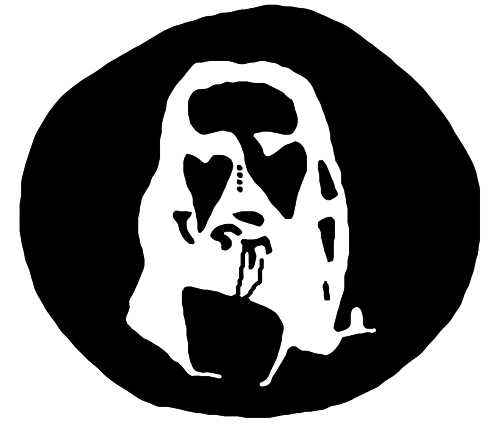
CHOICES AND ILLUSIONS
Figure 5
42
Choices and Illusions Interior.indd 42
6/20/13 3:41 PM
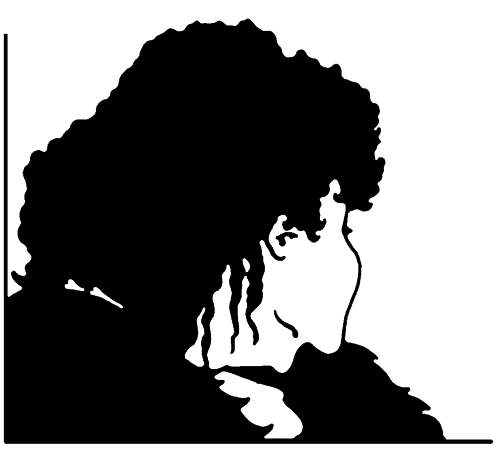

What We perceive and Fail to perceive
The next picture illustrates our abilities to see and not to see,
or to see differently. This is the rather famous witch and maiden
illusion. At first glance, you will see either a witch or a beautiful young maiden. You are typically unable to see both at the same
time—at least with conscious recognition. Shift your focus slightly, and the image changes. That is, if you see the witch first, shift your focus and you will see the maiden.
(Please note: these kinds of illusions can be found anywhere
and are widely circulated on the Internet.)
Figure 6
Here is another either/or image that is quite famous. It is known
as “faces and vases.” Can you see both?
Figure 7
43
Choices and Illusions Interior.indd 43
6/20/13 3:41 PM
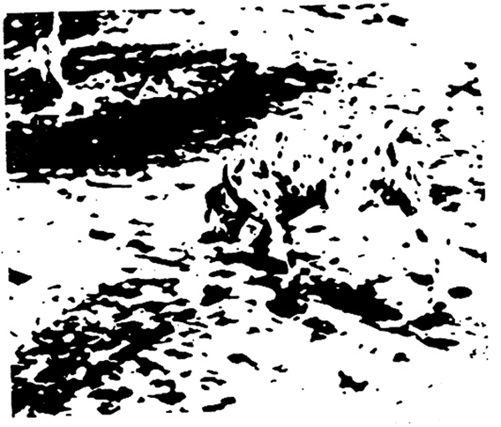
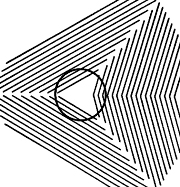
CHOICES AND ILLUSIONS
The next illusion involves dots. It reminds me of the hidden
faces one used to find in the Sunday newspaper. Finding and count-
ing the faces to win something was the purpose of the ad.
Below is a scattering of inkblots. Take a look and notice what
you see.
Figure 8
If you look closely, you will see a dalmatian with its nose down,
sniffing the ground. You can make out the dog’s ear, nose, shoulder, and left leg first, and the rest fills itself in. Once you see the dog clearly, you cannot help but see it—like the hidden faces in the old Sunday newspapers.
The following image is also a common illusion. Our visual ref-
erence system often distorts images according to the background.
The shape in the center is really a perfect circle.
Figure 9
44
Choices and Illusions Interior.indd 44
6/20/13 3:41 PM
What We perceive and Fail to perceive
One of my favorite illusions cannot be done on paper. Whether
you know it or not, there is a blind spot in the visual field that the brain interpolates (fills in). I encourage you to try this illusion. On my website is a spinning disk (
www.innertalk.com/hypnodisk/
hypno.html
). Go to the website or pick up a hypnosis spinning disk and select a picture that you can turn your gaze toward immediately after you focus on the disk. now stare at the center of the disk as it rotates. Allow your entire consciousness to become totally aware of the spinning disk. do this for about two minutes. Then
turn your gaze toward the picture you previously selected. An
amazing thing happens: the still picture suddenly comes alive. It
is no longer a two-dimensional image; indeed, it becomes a three-
dimensional, moving world.
In the provocative film
What the Bleep Do We Know!?,
psycho-pharmacologist Candace Pert retells a story about the conquis-
tadors and Montezuma. The story, an allegedly factual account,
essentially states that when the Spanish galleons approached, they
were invisible to the Aztec people. The reason was simply that
the Aztec had never seen ships of that nature. When the Spanish
approached the shore with their helmets on their heads, what the
Aztec perceived were gods with golden helmets reflecting the sun
as they walked on water. The Aztec welcomed them as gods, and
of course everyone knows what happened. According to the story,
it took several days of just staring at the water where the Spanish arrived for one of the Aztec sages to finally see the ships. Arguably, this story illustrates how we fail to see what we see, either because of psychological defense strategies and/or the inability to see what is not already in the mind to see.
A friend of mine, Professor William Guillory, has a model for
this nature of perception. It is the so-called reality model and looks like the following diagram.
45
Choices and Illusions Interior.indd 45
6/20/13 3:41 PM
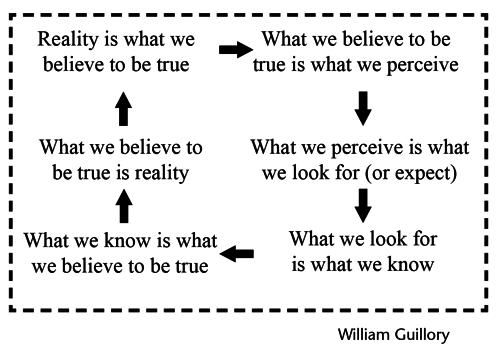
CHOICES AND ILLUSIONS
Figure 10
The circularity of our perception becomes obvious after fol-
lowing the arrows in the diagram above. What does not become
obvious to many is that the diagram represents reality for most.
In other words, most of us can see the circular looping but fail to recognize that it may apply to us.
In the next chapter we will look at defense strategies and once
again make some of them an experience. let me close this chapter
with a few more fun illusions.
46
Choices and Illusions Interior.indd 46
6/20/13 3:41 PM
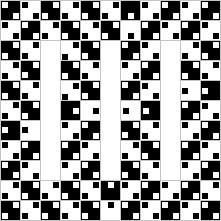

What We perceive and Fail to perceive
Figure 11
There are no curved lines in the diagram above.
Figure 12
